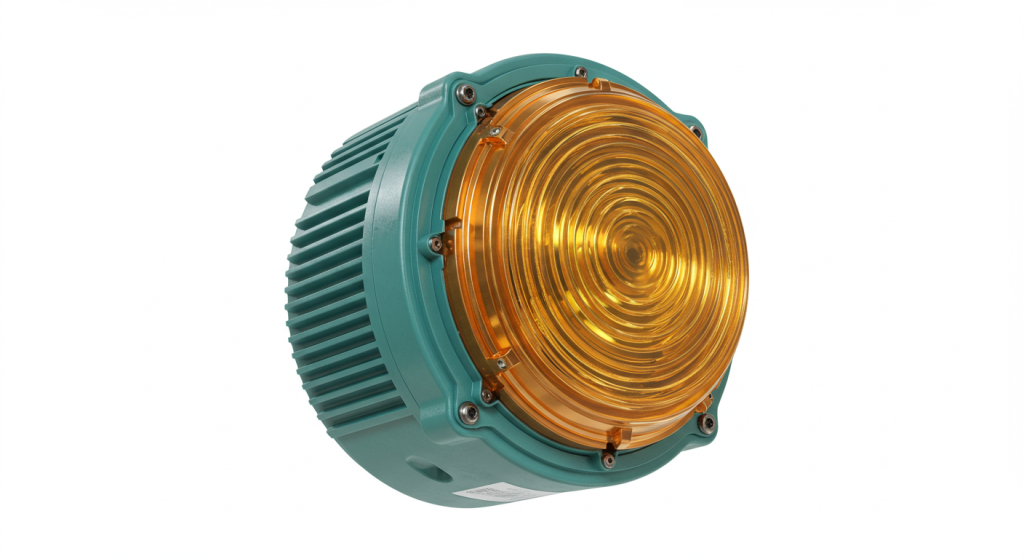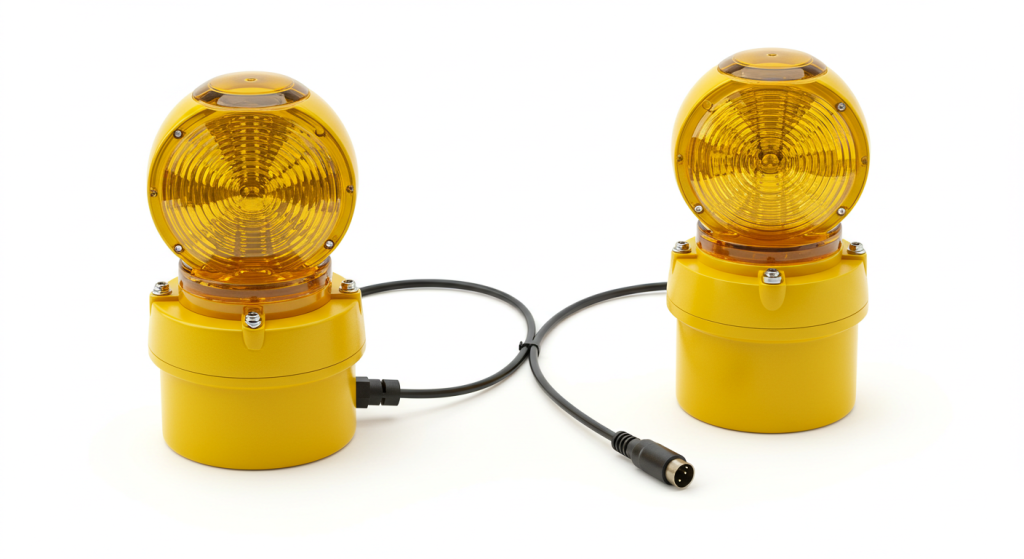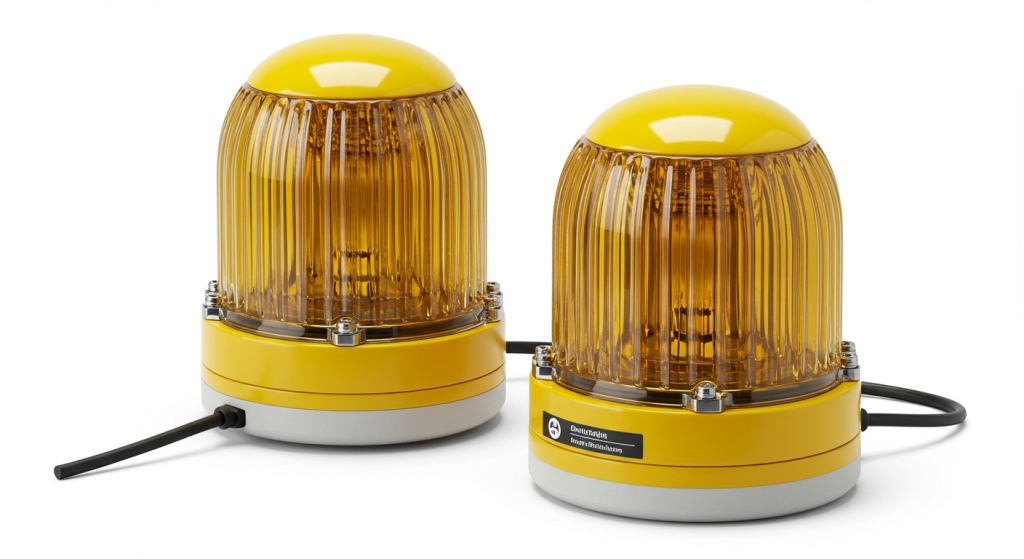In many fields such as traffic management and aviation warning, signal lights play a crucial role as silent conductors, regulating the trajectory of vehicles, pedestrians, and aircraft. With the deepening of the concept of sustainable development, solar signal lights have gradually emerged with their advantages of environmental protection, energy saving, and easy installation. Exploring the technical principles and design details of solar signal lights in depth not only helps us better understand this innovative product, but also provides solid support for its further optimization and widespread application.

The core of solar signal lights: photovoltaic conversion technology
The energy source of solar signal lights comes from solar radiation, and the key to converting sunlight into electrical energy lies in photovoltaic panels. The common types of photovoltaic panels are mono crystalline silicon, poly crystalline silicon, and amorphous silicon.
Mono crystalline silicon solar panels have high photoelectric conversion efficiency, usually up to 15% -20%. Its crystal structure is complete, with high internal electron mobility, and it can output stable and strong current under strong light irradiation. The production process of mono crystalline silicon solar panels is relatively complex and the cost is slightly higher, but their excellent performance makes them highly favored in solar signal light application scenarios that require high power and good lighting conditions, such as large signal lights at busy traffic intersections.
The photoelectric conversion efficiency of poly crystalline silicon solar panels is generally between 12% and 16%. It is composed of multiple silicon grains and has a simpler production process and relatively lower cost compared to mono crystalline silicon. Although the efficiency of poly crystalline silicon solar panels is slightly inferior, they are widely used in areas with strict cost control and decent lighting conditions, such as small parking lots and community road signal lights, due to their price advantage and good cost-effectiveness.
The conversion efficiency of amorphous silicon solar panels is relatively low, about 5% -10%, but its outstanding advantage is that it can also have certain power generation performance under low light conditions, and the requirements for lighting angle are not so strict. Its manufacturing process is simple, the cost is low, and it can be flexibly made to meet the installation needs of some irregular shapes. For example, warning signal lights installed on the surface of some buildings can continuously collect a small amount of electricity even on cloudy days or in poor morning and evening lighting.
The working principle of photovoltaic panels is based on the photovoltaic effect. When sunlight shines on the surface of the solar panel, photons interact with silicon atoms, causing electrons in the silicon atoms to gain energy and undergo transitions, resulting in electron hole pairs. Under the action of the electric field inside the battery panel, electrons move towards the negative electrode of the battery and holes move towards the positive electrode, thus forming a potential difference between the two poles of the battery and generating direct current. In order to improve power generation efficiency, the surface of the solar panel is usually covered with an anti reflection film to reduce the reflection loss of sunlight. At the same time, it is equipped with a frame and a back plate to protect the solar cells from external environmental damage.

Energy Storage Guarantee: Battery Management System and Energy Storage Battery
Relying solely on sunlight during the day to generate electricity cannot meet the uninterrupted working needs of solar signal lights, so an energy storage system is needed to store excess electricity for use at night or on rainy days.
Lithium batteries have become one of the mainstream choices in the field of solar signal light energy storage due to their high energy density, long lifespan, and low self discharge rate. There are various types of lithium batteries, such as lithium iron phosphate batteries, which have good thermal stability, high safety, and are not prone to thermal runaway even in high temperature environments; Ternary lithium batteries perform more outstandingly in terms of energy density, capable of storing more electrical energy in smaller volumes and weights.
Lead acid batteries were once a commonly used energy storage device, with low cost and mature technology, but low energy density, relatively short lifespan, and requiring regular maintenance (such as replenishing electrolyte). However, lead-acid batteries still have some application space in some simple solar signal lights that are cost sensitive and have low technical requirements.
The Battery Management System (BMS) is the key to ensuring the efficient and safe operation of energy storage batteries. BMS can monitor the voltage, current, temperature and other parameters of the battery in real time to prevent overcharging, over discharging, and overheating, thereby extending the battery life. For example, when the battery voltage approaches full charge, the BMS will automatically adjust the charging current to avoid overcharging and damaging the battery; In low-temperature environments, it can also control the discharge current to prevent a sharp decline in battery performance. In addition, BMS also has a battery balancing function to ensure that the power of each battery in the series connected battery pack is balanced, avoiding premature failure of individual batteries and ensuring the reliability of the entire energy storage system.
Intelligent light control: make the signal light turn on as needed
The solar signal light needs to be intelligently turned on and off according to changes in ambient light, and this function is implemented by the light control system. The light control system mainly consists of photosensitive sensors and micro controllers.
Light sensors are the “eyes” of light control systems, commonly including photo resistors, photo diodes, etc. The resistance value of a photo resistor will significantly change with the intensity of light. Under strong light irradiation, the resistance value decreases; When the illumination decreases, the resistance value increases. Photo diodes utilize the principle of photo current, where the stronger the light, the greater the current generated. These photosensitive sensors convert light signals into electrical signals and transmit them to the micro controller.

The micro controller is equivalent to the “brain” of the signal light, which receives electrical signals from photosensitive sensors and makes judgments based on preset programs. For example, when the ambient light intensity is below a certain threshold (such as at dusk), the micro controller will issue a command to turn on the signal light; As the night deepens and the ambient light further weakens, the micro controller can also adjust the brightness of the signal lights based on built-in algorithms to save energy and meet warning needs. In the early morning, when the light intensity rises above the set threshold, the micro controller will turn off the signal light again. Through this intelligent light control mechanism, solar signal lights achieve precise automatic operation, ensuring both warning effectiveness and maximizing energy savings.
Optical Design: Enhance Warning Effect
The optical design of solar signal lights is directly related to whether their warning effect can be effectively conveyed. For traffic signals, it is necessary to ensure that drivers can clearly distinguish the three color signals of red, yellow, and green at different angles, distances, and weather conditions.
The lampshade of signal lights is usually made of materials with good optical properties such as polycarbonate, which have high transparency, impact resistance, and weather resistance. The lampshade is designed with optical lenses inside, and different colored signal lights use different lens designs. For example, in order to enhance long-distance penetration, red signal lights often use convex lens designs to converge light into parallel beams and emit them outward, allowing drivers to recognize red warnings at a distance with just one glance; The green signal light focuses on expanding the viewing angle, using concave lenses or Fresnel lenses to scatter light at a wider angle, ensuring that vehicles in all directions at the intersection can see the green signal.
In the field of solar powered obstacle lights for aviation warning, optical design is particularly unique. In order to enable pilots to recognize obstacles from a distance in complex weather conditions, obstacle lights often use high-intensity red LED light sources, combined with special reflectors and lens combinations. The reflector concentrates the light and reflects it, while the lens further optimizes the beam shape, allowing it to penetrate clouds and mist at a specific flicker frequency and high brightness, clearly conveying the location information of the building to the pilot and ensuring low altitude flight safety.
Mechanical structure and heat dissipation design: ensuring long-term stable operation
Solar signal lights are exposed to outdoor environments for a long time and require a sturdy and durable mechanical structure to resist the invasion of wind, rain, dust, ice, and snow.
The signal light casing is generally made of materials such as aluminum alloy or engineering plastic. Aluminum alloy casing has the advantages of high strength, light weight, fast heat dissipation, and corrosion resistance, making it suitable for large, high-intensity signal lights, such as those on highways; Engineering plastic shell has low cost, good insulation performance, and is easy to form and process. It is commonly used for signal lights in small communities, parking lots, and other places. The design of the shell usually meets standards such as waterproof, dust proof, windproof, etc., such as IP65 or even higher, to ensure that the internal electronic components are not affected by the external environment.
The heat dissipation design cannot be ignored either. Electronic components generate heat during operation, especially high-power LED light sources and battery management systems. If the heat cannot be dissipated in a timely manner, it will cause the temperature of the component to rise, reduce its working efficiency, and even shorten its service life. Some solar signal lights use heat dissipation fins to dissipate heat into the air using the principle of natural convection; Some also add fans internally for forced air cooling and heat dissipation; In addition, thermal conductive silicone and other heat dissipation materials are widely used between components and casings to assist in heat transfer. Through comprehensive heat dissipation measures, signal lights can also operate stably in high temperature environments.
System Integration and Optimization: Creating Efficient Solar Signal Lights
Effectively integrating the above components – photovoltaic panels, energy storage systems, light control systems, optical systems, mechanical structures, and heat dissipation design – is a key step in the design of solar signal lights.
In the process of system integration, it is necessary to fully consider the compatibility and collaborative working ability between various components. For example, the output voltage and current of photovoltaic panels should match the input requirements of battery management systems and LED light sources to ensure efficient transmission and utilization of electrical energy. At the same time, the overall design should take into account cost, performance, and reliability. By optimizing the design, unnecessary component redundancy can be reduced, costs can be lowered, and the cost-effectiveness of the system can be improved.
From a software development perspective, the control program in micro controllers needs to be continuously optimized. In addition to the basic light control function, more intelligent functions can also be added, such as remote monitoring function, which transmits the working status of the signal lights (including battery level, light intensity, whether the signal lights are working properly, etc.) to the monitoring center through wireless network for timely maintenance; Fault self diagnosis function, when the signal light malfunctions, it can automatically detect and issue an alarm, notifying maintenance personnel to quickly locate the problem.
Conclusion
As a product of the integration of modern technology and environmental protection concepts, solar signal lights are gradually changing the way we ensure safety in our lives and travels. Through in-depth analysis of its technical principles and careful polishing of design details, we have seen the charm of interdisciplinary fields such as photovoltaic technology, electronic control, optical engineering, and mechanical manufacturing. With the continuous progress in materials science, information technology and other fields, solar signal lights will surely usher in new breakthroughs in performance improvement, functional expansion, cost reduction and other aspects, continuously emitting light and heat for many fields such as transportation and aviation, and safeguarding our orderly life. In the future, we have reason to expect it to have a new and more intelligent, efficient, and popularized appearance, becoming a shining pearl in the global sustainable development process.